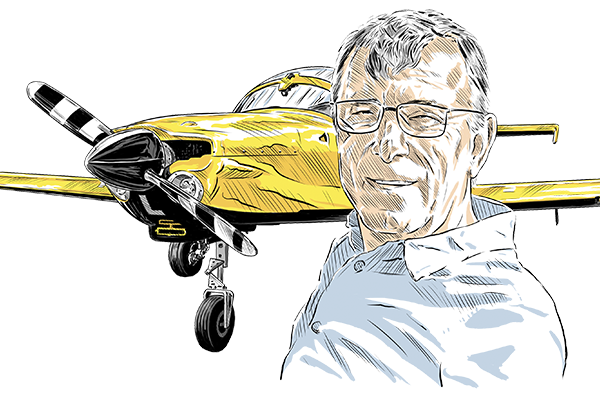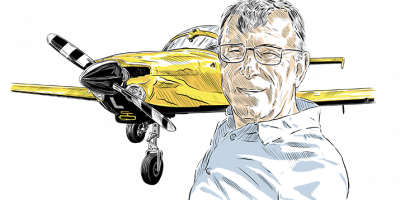Aircraft Type and Registration: Piper PA-28-140, G-BCJN
Date & Time (UTC): 4 August 2022 at 0935hr
Location: Cotswold Airport, Gloucestershire
Type of Flight: Training
Persons on Board: Two
Commander’s Age: 24
Commander’s Flying Experience: 526hR (of which 230 were on type)
During an attempted go-around at Cotswold Airport (Kemble) the aircraft, a Piper PA28-140, veered left from the runway track. The instructor was unable to establish a climb and the aircraft touched down roughly 350 m from the end of the runway, tracking approximately perpendicular to the left of the runway track.
As the aircraft touched down it passed between two parked, out of use, airliners and its right wing tip struck the nose landing gear of one of the parked aircraft.
The outer portion of the right wing was severed and the aircraft continued across the grass. It passed through the airfield perimeter fence, crossed the A429 road and came to rest in a ditch adjacent to the road.
There had been a confused handover of control between student and instructor that meant the go-around actions were not completed effectively. This resulted in the aircraft flying at very low height at an airspeed that was probably below the minimum power speed, leaving it with insufficient power to climb away.
History of the flight
The intended flight was a circuit training detail for a PPL student. The plan was to transit to Kemble, join the circuit, then do one circuit to a powered approach before moving to glide circuits.
The aircraft flew to Kemble to join for the intended circuit training. For the overhead join the student allowed the aircraft to fly approximately 300ft below the intended altitude but the instructor decided to allow him to continue.
There was another aircraft in the circuit and the student positioned on base leg was too close behind it, so the instructor took control and flew a go-around. He then repositioned the aircraft for the student to conduct a powered approach from base leg.
During the final approach the student allowed the airspeed to become too low, so the instructor took control, added power and completed the touch and go. On the climb the instructor returned control to the student for another circuit to a powered approach.
This approach was successfully carried out, though the student still required some assistance from the instructor.
On the third approach the instructor left more of the workload to the student. The student began his approach right of the centreline and then began to ‘snake’ either side of it. Initially, the aircraft was too high on the approach, but the student recognised this and reduced power to idle to correct.
The student then allowed the aircraft to descend below the approach path and added power, but as the aircraft pitched up to recover to the path the airspeed reduced.
The aircraft was left of centreline by this point and at approximately 300ft agl. The instructor considered that the approach was unsatisfactory and again decided to go-around.
CCTV from the airport showed that the aircraft continued descending to touch down near the threshold of the runway, then turned sharply left and became airborne again.
Once airborne, the aircraft continued to turn left but only climbed to approximately 20ft agl. It passed over a fence approximately 100 m from the left side of the runway and then continued towards a row of parked airliners.
The aircraft descended as it approached the line of parked aircraft. It passed under the wing of an Airbus A319 and touched down as it passed between the A319 and an Airbus A321.
The right wing tip struck the nose landing gear leg of the A321 severing the outboard section of the right wing. The aircraft then continued across the grass, passed through the aircraft perimeter fence and crossed the A429 road, which runs just outside the airport perimeter.
The aircraft encountered no cars as it crossed the road, but struck trees surrounding a vehicle yard and came to rest in a ditch alongside the road.
Pilots’ recollections
The instructor recalled stating: “I have control” at approximately 100 ft agl. The instructor applied full power and retracted the flaps to 25°, which is standard for a go-around. At this point the airspeed was approximately 60kt, whereas the planned approach speed was 70kt.
As the instructor applied power, he recalled the aircraft pitching up more than he expected and rolling left. The instructor noticed that the student was continuing to make control inputs.
He described using explicit language to encourage the student to fully relinquish control. The instructor did not recall the student stating “You have control” at any point, nor did he recall stating “I have control” a second time.
AAIB analysis
During a circuit training detail, the instructor was not satisfied with the student’s handling of an approach. He recalls directing a go-around, but this order was not acknowledged by the student and nor did the instructor repeat his order when he did not receive the correct response from the student.
Both pilots felt the other continue to make control inputs and there was confusion between them as to what actions were being taken. As a consequence, the go-around was not effectively instigated.
The instructor believed the go-around actions of applying full throttle and retracting one stage of flap were carried out at 100ft agl but the actual point of application is unclear.
The CCTV images show that the aircraft descended and briefly touched the runway before lifting off again. It is therefore likely that full throttle was applied much lower than recalled by the instructor.
Nick’s analysis
One of the most difficult judgements that Flying Instructors (FIs) have to make is when to intervene when a student pilot is making a mistake or is about to make a mistake.
FI courses provide some training on these issues, but it’s impossible to demonstrate all the potential situations that an FI might find themselves in.
FIs consistently have to manage student errors. We know that, in general, a lot of learning is achieved by making mistakes. In the flying game, however, there is always a limit as to when an error can be allowed to develop into a dangerous situation.
The skill and judgement of an FI develops with experience, such that they generally know how far to allow a student to learn from a mistake, but without intervening too early such that the learning point is not achieved.
I’ve had my own scares during various instructional situations. During my first QFI tour on the Jet Provost in the RAF I allowed a student to allow our aircraft to start to lose position during a tailchase.
As we continued a scissors manoeuvre with the lead aircraft, my student failed to maintain a position behind the leader and we finished up slicing across in front of the leader by an uncomfortably close margin.
We packed up the sortie and went home. The fault was entirely mine as I should have taken control earlier to avoid what was a dangerous situation. I was always very mindful about how quickly things can go wrong after that incident.
In this accident case the FI was flying with a PPL student who was finding flying training difficult, and the FI would have understood that from the start.
Both pilots were also faced with a common problem in older GA aircraft with the ASI calibrated in MPH on the eye-catching outside scale with knots displayed on the less-obvious inner scale. While perhaps innocuous to some, add in some student inexperience, and speed misinterpretations can occur.
It looks like the FI did not intervene unnecessarily when the student was making errors in height keeping during the circuit join, which is sensible, too much FI nagging can be a bit wearing!
However, on the third approach it looks like the speed was allowed to drop below where it should have been. This is an area, I suggest, where early FI intervention has to be applied since the laws of physics will start to work against you.
Excessive loss of speed, as the AAIB report details, may lead to the aircraft falling below minimum drag speed at which point considerably more power – or height that can be converted to speed – will be required to overcome increasing induced drag.
At the time of the attempted go-around in this case, it looks like the pilots did not have enough of either power or height. The FI may not have applied power immediately as he began the go-around, though I find that is a fairly instinctive reaction by most pilots when faced with this situation.
Many FIs use the ‘I have control/You have control’ method to define who’s flying the aircraft. I’ve always used it from my own military flying as I know there have been some spectacular occurrences in military aircraft when control of the aircraft has been left in some doubt!
I know that some FIs feel that it is an unnecessarily formal style, and I agree that with a side-by-side seating arrangement it’s usually fairly clear who’s flying the aircraft.
Whatever the argument, as a student if you do hear ‘I have control’ from an instructor you should relinquish all control of the aircraft to the FI. Dual control inputs are rarely helpful!
In summary
- As an FI, don’t allow a training situation to develop to such an extent that you are unable to recover safely.
- In the same vein don’t instigate a simulated emergency in which incorrect handling may lead to major problems, such as engine failure very soon after take-off.
- As a student pilot, if you hear ‘I have control’ from an FI relinquish all control of the aircraft.





